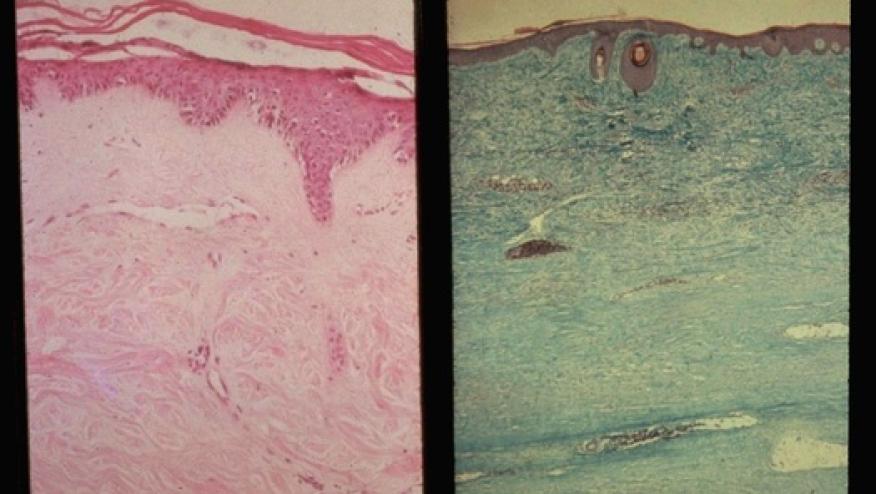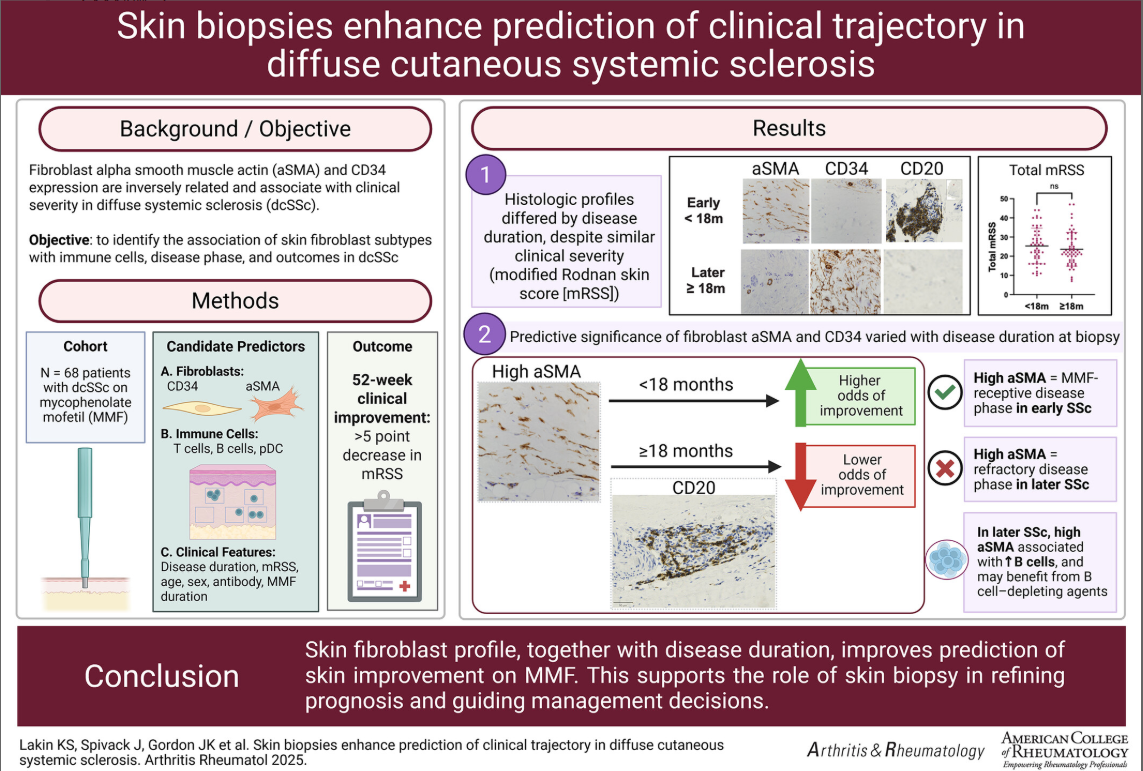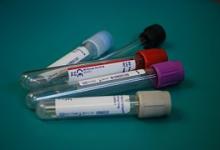Skin Biopsies to Predict Scleroderma Outcomes? Save

Researchers from the Hospital for Special Surgery and Weill Cornell Medicine have shown that skin biopsies in patients with systemic sclerosis (SSc) can define a fibroblast immunophenotype that may have prognostic and early treatment decision impact.
Skin biopsies were obtained from 105 SSc patients with diffuse disease (dcSSc) enrolled in clinical trials to assess the presence of CD34 and alpha- smooth muscle actin (aSMA) in skin fibroblasts and Immune cells (CD20+, CD3+, CD123+). 52-week improvement in the clinical trial was defined as >5-point decrease in modified Rodnan skin score (mRSS).
dsSSc patients in different trials had similar baseline mRSS. They reported several interesting findings:
- Early disease was associated with lower CD34, higher aSMA, increased B cells, and greater mRSS improvement (vs later SSc)
- Imaging mass cytometry (IMC; to assess fibroblast organization) found CD34+ fibroblasts in superficial dermis and aSMA+ fibroblasts in deeper, collagen-dense regions.
- In MMF users, high CD34 and aSMA predicted improvement in early SSc; however, high aSMA predicted lower odds of improvement in later SSc.
- The probability of improvement was lowest in early SSc with aSMAlow/CD34low immunophenotype and later SSc with aSMAhigh.
- In later SSc, B cells were higher in aSMAhigh versus aSMAlow skin.
Fibroblast phenotypes varied by disease duration. For those on MMF, a phenotype identified those with improvement.











If you are a health practitioner, you may Login/Register to comment.
Due to the nature of these comment forums, only health practitioners are allowed to comment at this time.